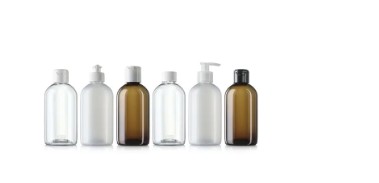As more companies move towards biopolymers as an alternative to fossil-fuel-based plastic, some are considering hemp as a potential biomass source, but can this ‘wonder crop’ make an impact in the world of bioplastic? Heidi Vella investigates.
The humble hemp plant has long been known for its versatility: alongside bamboo, it is one of the quickest growing plants and is routinely refined into a variety of commercial items, including paper, textiles, and food products.It is, however, perhaps more closely associated with the drug cannabis, both of which are derived from the cannabis sativa plant. Although a different product altogether, it’s the US’s deregulation of this more infamous product that is driving a burgeoning new market – one using hemp to produce bioplastics for packaging.
The 2018 US Farm Bill changed federal policy, removing hemp from the Controlled Substances Act and allowing the consideration of hemp as an agricultural product: meaning farmers can now cultivate it industrially, the waste from which many say is an ideal bioplastic feedstock.
Why hemp?
In fact, one of the first companies to use hemp bioplastics in its products is a cannabis packaging designer and manufacturer. California-based Sana Packaging uses a fibre-reinforced biocomposite made from 30% micronised hemp herd and 70% polylactic acid (PLA), derived from plants such as corn and kenaf, to produce its premium packaging.
Sana co-founder & CSO, James Eichner, says that the company was inspired to use hemp as a feedstock for bioplastics as it has several agricultural advantages over corn, from which most bioplastics are derived.
“Two crops of hemp can be grown in the time it takes to grow one of corn, hemp requires around a third of the water corn does and because it is a canopy crop, it protects the soil from sunlight and erosion – unlike corn, which leaves the soil exposed. Hemp regenerates the soil, whereas corn depletes it,” explains Eichner.
Hemp is also known to absorb large quantities of CO2 from the atmosphere and can create a cellulose content – which is important for bioplastics – of 65%-75%. It is also flexible within crop cycles, due to its small harvesting period of only four months.
Sana initially started producing its packaging with pilot projects and then, when it could assure stability of supply, commercially at the beginning of 2019. Now the company is working with multiple suppliers.
Establishing a supply
However, Eichner says the supply chain for hemp feedstock is by no means comparable to other materials and it currently comes at a premium price.
CEO of US-based Hemp Plastics, Glen Kayll, says hemp bioplastics “can be less expensive than some PLA’s, depending on the base material, but more expensive than fossil fuel fuel-based resin.”
The major factor is that, as yet, there is no commercial availability of polymerized hemp plastic.
“It’s very early stages for hemp, but it is fundamentally a disruptive technology, driven by massive deregulation, which continues to play out around the world. The big swing in North America was the CBD market, which creates large amounts of industrial hemp waste that has made this opportunity more possible,” he explains.

The size of the global industrial hemp market is forecasted to grow at a CAGR of 13.7% between 2020 to 2025 and be worth $12.98bn by 2025. Difficulty refining end products from the crop and fluctuations of availability of raw materials, however, is restricting the market.
Like Eichner, Kayll believes hemp can address some of the environmental concerns around the growth of fossil fuel plastics, as well as the increase in industrial hemp waste.
“We realised that a large amount of hemp was going to be available and thought: wouldn’t it be great to find a way to reduce the amount of fossil fuel plastic and provide a product that is reasonably inexpensive and easy to implement and happens to look fantastic,” he explains.
Similarly to Sana, Hemp Plastics does not use 100% hemp-based plastic, but blends hemp plastics with various different thermoplastics, including fossil fuel and bioplastics, and custom blends.
Lack of infrastructure
While hemp is routinely used in other markets, Corey Kratcha, CEO of C2Renew, a biocomposite manufacturer that uses hemp as one of its inputs, says there is a lack of infrastructure for hemp bio-feeds.
“It’s a chicken and egg scenario with fibre processing in general. It usually starts with a pilot or small-scale investment in the equipment, but the output is so low that the economics to recoup the cost has to be much higher,” he explains.
“That can be prohibitive, there needs to be confirmation there will be revenue sources. We would use it readily if the supply was consistent.”
A challenge to investments in the industry could be that corn, the dominant feedstock for bioplastics, is heavily subsidised in the US. Farmers that produce commodity crops such as corn receive around 40% of their income from subsidies.
What we’re trying to do is recognise the need to move away from corn as a mono-crop in the US and as a feedstock for bioplastics.
“Corn has been subsidised for a very long time and hemp will not compete with it until either the hemp industry reaches a certain economy of scale through its own natural growth, or until hemp itself is subsidised, or until corn is no longer subsidised,” says Eichner.
“What we’re trying to do is recognise the need to move away from corn as a mono-crop in the US and as a feedstock for bioplastics.”
In Europe, where France is the predominant producer of hemp, the hemp packaging industry is as yet non-existent. However, the European Industrial Hemp Association is promoting it as a potential application and says the sector is becoming more organised and has “great opportunities ahead”.
The Association reports that there is currently an oversupply of hemp biomass in the EU, caused by the “hype” around CBD, which in turn has led to an ‘explosive growth in the number of cultivators, producers, and investors’.
It was recently reported that authorities in the Italian town of Roccasecca are exploring the potential for developing a hemp plastics supply chain while cleaning up local land, as the plant has remediation possibilities. A company called Eir Health also claims to be building the first factory in Europe to produce 100% biodegradable Hemp PLA.
Future potential
Despite hemp’s environmental credentials, some question the sustainability of bioplastics full-stop, noting that they are often non-recyclable and commercial compositing is still nascent.
Eichner agrees that the end of life argument is where the sustainability case for plant-based materials becomes harder to make.
However, Kayll says even if it is not biodegradable, reducing the amount of plastic used by 25% – the level of hemp used in Hemp Plastics’ products – is “meaningful”.
“If you are a company that’s running hundreds of thousands of tonnes of plastic every year, then that’s a very meaningful reduction, and it’s also a great way to sequester CO2,” he says.
While the hemp bioplastics sector is still fledgeling, Kayll believes in the future it will compete with other commodities due to its durability, versatility, and ease of growth.
“It’s a very valuable plant, there’s going to be many applications, it’s just going to take a while – industries take time to build, but the bioplastics and sustainable materials market is growing extremely quickly relative to your traditional incumbent markets,” says Kayll.
Indeed, by 2030, it is estimated that 40% of the plastics industry will be bioplastics. Furthermore, Kratcha says it only takes one huge company to start using hemp bioplastics to move the market.
“Hypothetically, if Walmart said it wants hemp composite in its clothes hangers it would very much move the needle,” he concludes.
Source







